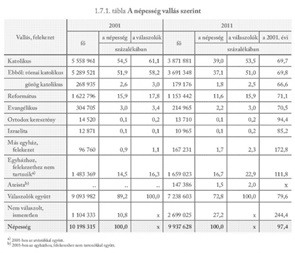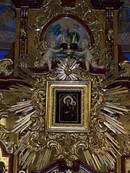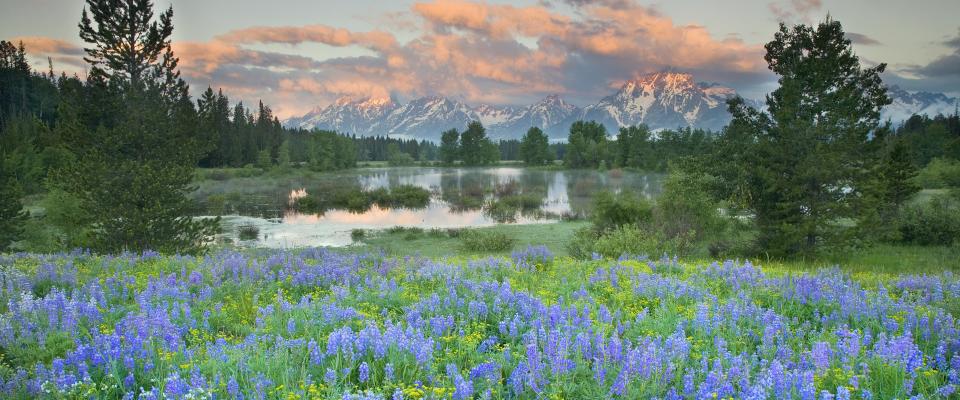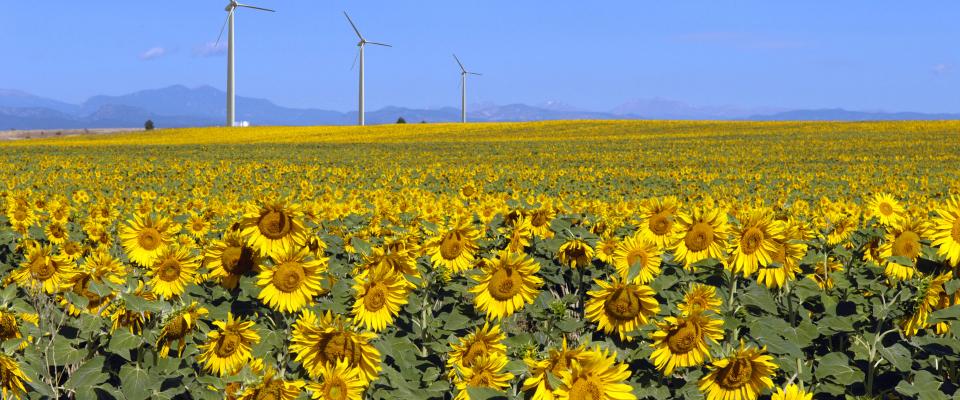CIV.6 Religion related tourism products
The specific and current trend of the social environment of the touristic business projectsis the strengthening of the needs for transcendence and religion, the search for life principles in the field of spirituality. In addition to the phenomenon of becoming religious, certain social groups and age groups are denyingreligion or God. Though the potential lying in religious tourism attracts today more and more attention to religious destinations because even non-practitioners will visit religious sites, buildings (churches, synagogues), and monuments. This applies to religious sites, related events and pilgrimages as well. All these generate and justify the deliberate use of marketing tools and management techniques. The relationship between religion and tourism usually is connected tothe experience of a great unity (religious or cultural), of the similarity, the togetherness(Pusztai, 2003 in Sulyok -Mártonné, 2014). The pleasure/ fun oriented society plays an important role in the transforming of the religious places into touristic destinations (Korpics, 2003 in.:Sulyok – Mártonné, 2014). Besides the incoming-producing ability as one of the socio-economic benefits of the religious tourism, we can also mention that it attracts visitors throughout the year.Religious tourism sites due to their tourism product nature are the intermediaries of real experiences also and can bring changes in the lifestyle of people, develop their personality, bring positive change (Sulyok – Mártonné, 2014).

|
Religion, denomination |
2001 |
2001 |
|||||
|
Persons
|
The population |
The respondents |
Persons |
The population |
The respondents |
From 2001 |
|
|
Percentage |
Percentage |
||||||
|
Catholic |
|
|
|
|
|
|
|
|
From these: Roman Catholic |
|
|
|
|
|
|
|
|
Greek Catholic |
|
|
|
|
|
|
|
|
Calvinist |
|
|
|
|
|
|
|
|
Lutheran |
|
|
|
|
|
|
|
|
Orthodox Christian |
|
|
|
|
|
|
|
|
Hebrew |
|
|
|
|
|
|
|
|
Other religion, denomination |
|
|
|
|
|
|
|
|
Not religious, not member of denominationa) |
|
|
|
|
|
|
|
|
Atheistb) |
|
|
|
|
|
|
|
|
Respondents – total |
|
|
|
|
|
|
|
|
Did not answer, unknown |
|
|
|
|
|
|
|
|
Population |
|
|
|
|
|
|
|
a) in 2001, together with atheists
b) in 2001, together with not religious, no members of denomination
Figure 1: Thereligiousdistribution of Hungarianpopulation
(Source:www.egyhazestarsadalom.hu)
Themainmotivationforreligiousholidaysis thatmost ofthepilgrimsvisitingthe destinationsexpect to some spiritualexperience. Forreligioustourismthe biggest potentialattraction forceis the one of theshrines, cathedralsandabbeys/monasterieswhichhassignificantculturalvalue(Irimiás-Michalkó, 2013).
For the most importantCatholicfeasts see www.katolikus.hu, for the mainProtestantholidaysseewww.reformatus.hu, for the mainLutheranholidaysseewww.evangelikus.hu and for the majorJewish holidays, see www.zsido.com.
The basicnotionsofreligioustourism:
Shrine:Catholicpilgrimage site, visiting it one can obtainfullIndulgence.
Indulgence(indulgentia):Thelong-term punishmentforsinis released. Obtaining theindulgenceis connected to canonicalandgraceteaching conditions.
Pilgrimage: Religious place, holy place, shrine, grace place visited with devotionalpurpose.
Indulgence pilgrimage:Catholicbelievers’ pilgrimage, the purpose being the obtaining of thefullindulgence,ifpermitted in thatchurchandin thattime. This time,if necessary,the believers make their Confession, receive the holy communion during the service andpray forthe Pope'sthoughts1Apostles Creed,Our Father, HailMary, and3 Glory Be.
Pilgrim:Every person whois eitherreligiouslyordevotionally motivated, orsimply just as a curious, searching person,who visits aholy place, respecting the generallyexpected attitude.
ReligiousPlace: Place considered importantbyanyreligion, for instance:the hometownof Saints.
Grace Place:Aplaceof remembrance, important for the community or declaredso by a religion in honourof anhistoricaleventorpersonality, for instance the DonCorner Cemeteries.
Holy Sites:Theplaces which are blessed as specified in the liturgical books and meant for the services and the burials of the believers.
EucharisticCongress:The celebration ofthe Eucharist organized forCatholicbelieversonce a year,in differentcountries andcities, lastingoneweek, mobilizing large crowds from all over the world; during the Congressthebelieversparticipate in services, meetings, events,conferences.
Religiousmeeting:The longer, mass coexistence of the members of certain religions and religious denominations organized with devotional purpose and to empower the sense of religious togetherness.
During thepilgrimage the following importantelementshas to be taken care of:
The tripneeds to take place in a sacredatmospherefromthestartto thecoming home.Thismeans that the pilgrimage happens in a liable,Christian kind of lifestyle. We have to take notice thatthereligious persons,the believerseatevery day, prayevery day, Sundays oron feasteat moreand finer, onpilgrimagepray more elevatedandmore. The balancedprayer,conversation, service participation, teaching and meditation should be present.
Thepilgrimcenter has a chapeland was designed especiallyforpilgrims. Itwould bedesirableifthepilgrimscouldovernight every timein a pilgrim house, but thisis not always possible.
It is extremely important to the position of the accommodation. It is recommendable, in case of flying traveller groups, the accommodationto be downtown with good transport facilities. In case of by bus traveling groups it should be easily reached by the bus. Another important factor is that the hotel should have good local transportation facilities, and shouldn’t be situated ina dubious place regarding safety or inparty area. The criteria for the selection of the restaurants should be the following: easy to reach, if possible with national culinary tradition, relatively cheap category. Regarding the programs, we need to know that the visiting of local attractions is a necessity. For example it can happen that one pilgrim reaches once Rome but wants to see Trevin Fountain at all costs. The cultural treasures instead of disturbing the efficiency of the pilgrimage impress the pilgrim; raise the spirit towards God, that’s why it is important to assure the detailed information to the tourist, at the attraction points of the pilgrimage. (Madari, 2012)
The Saint-Michael Grace church from Máriapócs is very important for Szabolcs-Szatmár-Bereg county’s religious tourism and also the National Grace Place from Máriapócs, which is a famous grace place, where pilgrims come for indulgence,is extremely relevant. The place became known in 1696 due to the tear shedding Saint Mary, when during the service from the church, the believers noticed that Saint Mary’s icon is watering.
The history, pilgrimages, indulgences, mass order in the Grace Church you can find on:www.mariapocskegyhely.hu
The grace picture from Pócs was made in 1676 on the initiative of Csigri László, local judge from promise and gratitude in the memory of the liberation from the turkish slavery. The icon was painted by Papp István, the brother of the local Greek Catholic priest, Papp Dániel, for 6 Hungarian Forints.
The judge wasn’t able to pay this sum, so the painting was bought by a wealthier citizen, Hurta Lőrinc, who donated it to the church. Probably he was the one who put on the bottom of the icon, in Russian language, the following text: ”I, the servant of God, set up this painting for the forgiving of my sins”.
On the 4th of November 1696, during the service held in the wooden church by priest Papp Dániel, the local farmer Eöry Mihály noticed that from both eyes of the painted Saint Mary tears were flowing. The exceptional event filled with admiration the present persons. The lachrymation lasted continuously for two weeks , then with little interruptions until the 8th of December. According to the writings from that period, on the last day of tear shedding it was so cold that the wine and water from the chalice froze, but the tears of Saint Mary were still flowing.
On the 8th of December 1696 made his appearance in Pócs count Corbelli general, the commander-in –chief of the imperial army. He verified the integrity of the icon and dried the flowing tears with a towel. The verifications were repeated in the presence of 300 persons, among them being Lutherans and Calvinists. The religious examination was ordered by the bishop of Eger, Fenessy György. The audiences of witnesses began on the 26th of December 1696and the reports included 36 explicit declarations of Catholic and Protestant witnesses confirming the truth of the tearful Saint Mary. General Corbelli sent the bishop his handwritten declaration and he reported the emperor the wonder of lachrymation (Source: www.gorogkatolikus.hu)

Other relevant homepages:
www.templomut.hu/hu
Pilgrimage:
Related videos:
Mária pilgrimage
Pilgrimage of pearls
St. Elizabethpilgrimage
The sinagogue







